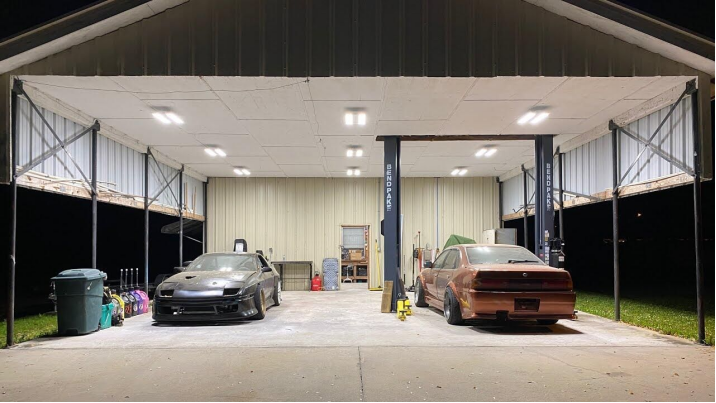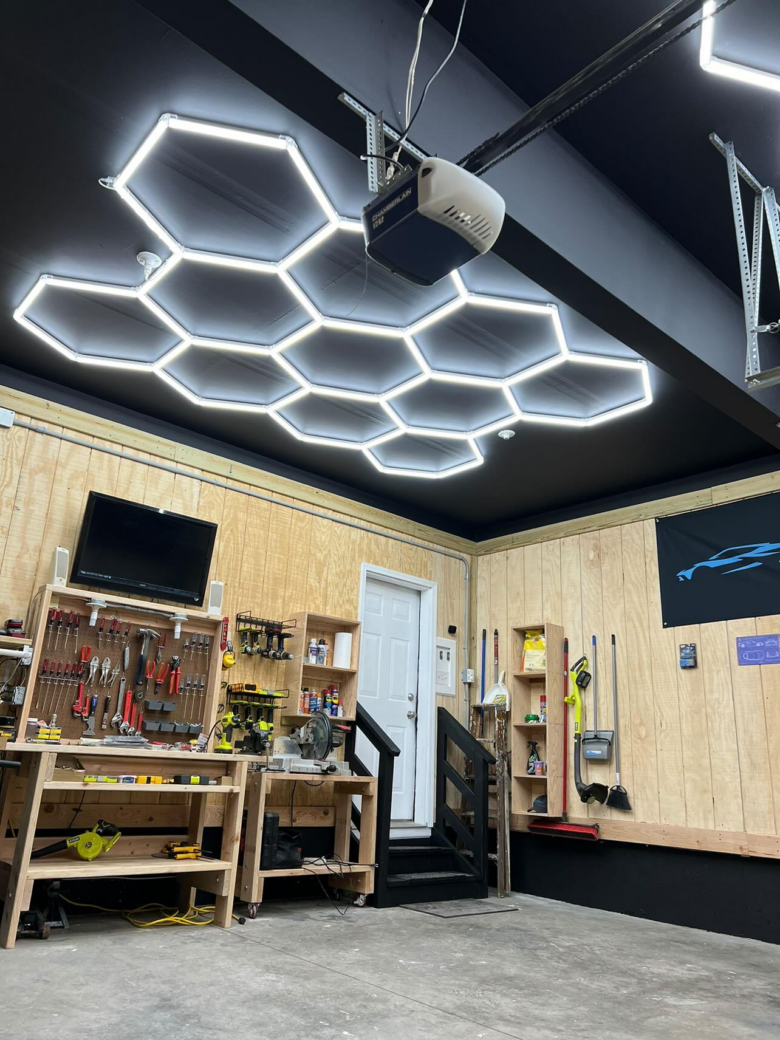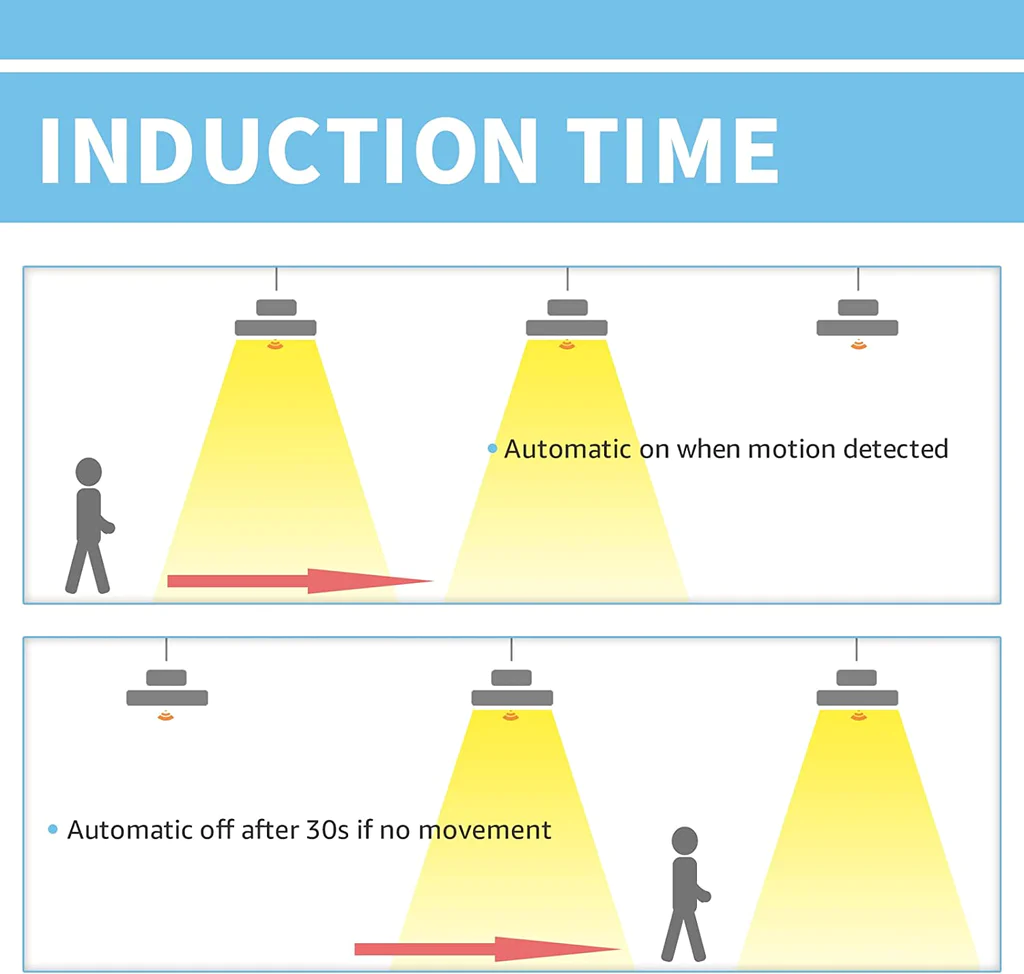Selecting the right lighting for your garage is not just a matter of illumination, but also about enhancing functionality and safety. The significance of this choice cannot be overstated, as the proper lighting transforms your garage from a dim, unwelcoming space into a bright, multi-functional area. Whether your space serves as a workshop, a storage area, or simply a place to park your car, the appropriate lighting is key to maximizing its potential. In this comprehensive guide, we will delve into ten essential tips for choosing the best garage lighting, with a particular emphasis on the advantages of LED garage light.
Contents
- Tip 1: Assess Your Garage’s Purpose
- Tip 2: Consider Brightness Levels
- Tip 3: Choose Between LED, Fluorescent, and Incandescent
- Tip 4: Understand Color Temperature
- Tip 5: Opt for Energy Efficiency
- Tip 6: Evaluate Durability and Longevity
- Tip 7: Consider Motion Sensors
- Tip 8: Balance Ambient and Task Lighting
- Tip 9: Proper Placement and Spacing
- Tip 10: Budget-Friendly Options
Tip 1: Assess Your Garage’s Purpose
Understanding the primary function of your garage is the first step in selecting the right lighting. Different activities demand different lighting solutions. For instance, a garage used as a workshop necessitates bright, focused lighting to ensure precision in tasks, which is perfectly served by LED garage lights. In contrast, a carport primarily used for storage might require softer, more diffuse lighting to gently illuminate the space without creating harsh shadows. If your space doubles as a gym or recreational area, consider a combination of both ambient and task lighting to cater to different needs.

Tip 2: Consider Brightness Levels
The brightness level of your garage is a critical factor for both safety and functionality. Brightness in lighting is measured in lumens, while energy consumption is gauged in watts. A higher lumen count signifies a brighter light. A LED carport light is particularly beneficial as they provide substantial brightness with lower wattage, thereby offering efficiency and cost-effectiveness. Assess the activities you undertake in your space and choose a lumen level that ensures adequate visibility without causing discomfort or glare.
Tip 3: Choose Between LED, Fluorescent, and Incandescent
The most common types of garage lighting are LED, fluorescent, and incandescent lights. Each type has its own set of pros and cons. A LED garage light, for example, are known for their energy efficiency, long lifespan, and excellent brightness, making them a versatile and cost-effective choice for various car hole activities. Fluorescent lights offer good energy efficiency but may not be as durable as LEDs. Incandescent lights, while being more affordable upfront, are less energy-efficient and have a shorter lifespan. For a balance of efficiency, durability, and cost, LED garage lights are often the preferred choice.
If you want the best selection, choosing Hyperlite for your garage lighting needs means embracing innovation and practicality. Their LED lights shine brighter, last longer, and are more energy-efficient than traditional options. The enhanced visibility and safety they provide are essential for a garage’s functionality, whether for vehicle maintenance or just parking. Hyperlite’s focus on customer satisfaction is evident in their continual product improvements, ensuring their lighting solutions meet your requirements. With their commitment to energy efficiency, you’ll see noticeable savings on your electricity bills. Additionally, their long-lasting, low-maintenance LED lights mean more time enjoying your garage and less on upkeep. When selecting the right lights, Hyperlite’s range, including stylish Hexagon lights and practical UFO LED Lights, offers versatility and optimal luminosity for any garage space.

Tip 4: Understand Color Temperature
Color temperature is a key element in setting the right atmosphere and functionality in your garage. Measured in Kelvins, color temperature ranges from warm yellowish hues to cool bluish tones. A neutral or slightly cool color temperature is typically best suited for garage environments, especially when using a LED garage light. This range provides clear visibility for tasks while being easy on the eyes, creating a conducive environment for various activities. The right color temperature can significantly enhance the functionality and comfort of your space.

Tip 5: Opt for Energy Efficiency
Opting for energy-efficient lighting is not only beneficial for your wallet but also for the environment. Among the various options, LED garage lights stand out as some of the most energy-efficient. They consume significantly less power and have a much longer lifespan compared to traditional bulbs. This efficiency translates into lower electricity bills and fewer bulb replacements over time, making LED lights a smart, long-term investment.
Tip 6: Evaluate Durability and Longevity
In the variable conditions of a garage, choosing durable and long-lasting lighting is crucial. You need lights that can withstand fluctuations in temperature and humidity, and possibly even dust and debris. LED garage lights excel in this area, offering remarkable durability and an extended lifespan. Unlike traditional bulbs, they are less likely to break or malfunction under challenging overall conditions, ensuring consistent and reliable lighting for years.
Tip 7: Consider Motion Sensors
Incorporating motion sensors in your garage lighting setup can significantly enhance convenience and energy efficiency. Motion sensors ensure that lights are activated only when needed, which is particularly useful in a garage where hands are often full or dirty. Combining LED garage lights with motion sensors creates an optimal setup that saves energy, reduces costs, and adds a level of convenience and modernity to your carport.
 Tip 8: Balance Ambient and Task Lighting
Tip 8: Balance Ambient and Task Lighting
A well-balanced garage lighting setup should include both ambient and task lighting. Ambient lighting provides overall illumination to the space, making it safe and inviting. Task lighting, on the other hand, focuses on specific areas where precision activities take place. LED garage lights are excellent for both applications. They can be installed as overhead lights for general ambiance and as focused, brighter lights over workbenches or specific areas where detailed work is performed.
Tip 9: Proper Placement and Spacing
Effective lighting in a garage is not just about the type of lights used, but also about their strategic placement and spacing. Poorly placed lights can create shadows and glare, reducing visibility and potentially causing safety hazards. It’s important to evenly distribute lights throughout the space and position them strategically to illuminate key areas. For instance, placing a LED garage light directly above work areas or along the perimeter can provide uniform lighting that covers the entire space without leaving dark corners.
Tip 10: Budget-Friendly Options
While you may be inclined to choose the most economical lighting options, it’s important to consider long-term costs and benefits. LED garage lights, although sometimes more expensive upfront, are more cost-effective in the long run due to their energy efficiency and long lifespan. Additionally, there are budget-friendly LED options available that do not compromise on quality or efficiency. Investing in good lighting is investing in the safety, functionality, and comfort of your carportspace.

Source: curu.love
Conclusion
In conclusion, the right lighting can drastically enhance the functionality and safety of your carport. From assessing the garage’s purpose to considering brightness levels, color temperature, energy efficiency, and more, these ten tips provide a comprehensive guide to selecting the best lighting option. LED garage lights, with their efficiency, durability, and versatility, often emerge as the superior choice for most garage lighting needs. By making an informed decision, you can transform your carport into a well-lit, efficient, and inviting space.
